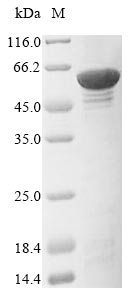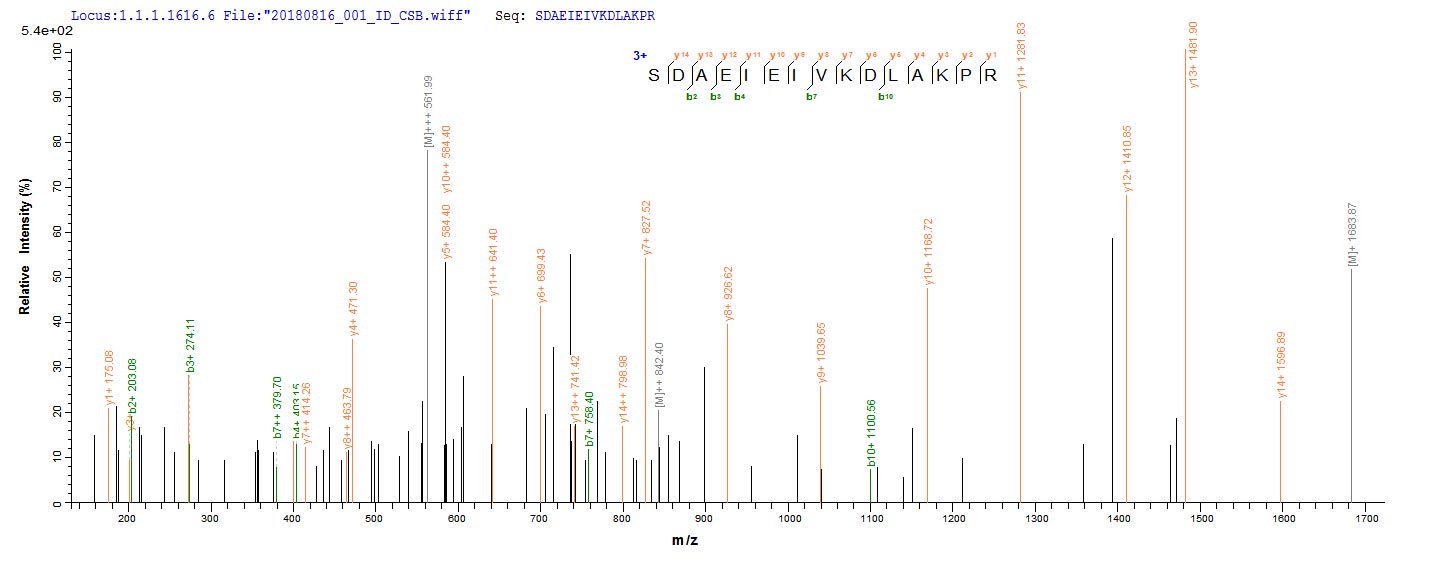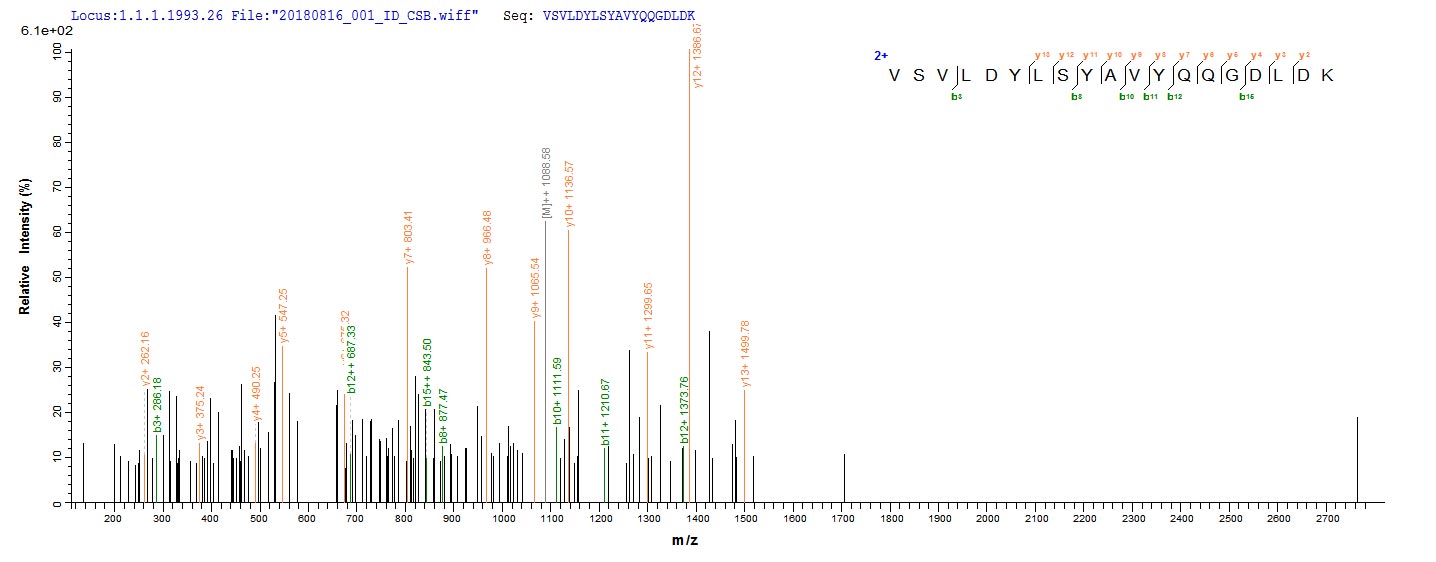The recombinant Human P4HA1 was expressed with the amino acid range of 18-534. The calculated molecular weight for this P4HA1 protein is 63.1 kDa. This protein is generated in a e.coli-based system. The P4HA1 coding gene included the N-terminal 6xHis tag, which simplifies the detection and purification processes of the recombinant P4HA1 protein in following stages of expression and purification.
The human prolyl 4-hydroxylase subunit alpha-1 (P4HA1) is a key component of the prolyl 4-hydroxylase enzyme complex, which plays a critical role in the post-translational modification of collagen. P4HA1 specifically catalyzes the hydroxylation of proline residues in collagen, contributing to the stability and structure of this essential extracellular matrix protein. This enzymatic modification is crucial for collagen's proper folding and function. Collagen, in turn, is a major structural protein in connective tissues, providing strength and support to various tissues and organs in the body. Research on P4HA1 often delves into understanding collagen biosynthesis, tissue development, and the role of collagen in health and diseases, including fibrosis and cancer. Additionally, investigations may explore therapeutic strategies targeting collagen-related disorders by modulating P4HA1 activity.








